Understanding the Origins of Roaches in Clean Homes
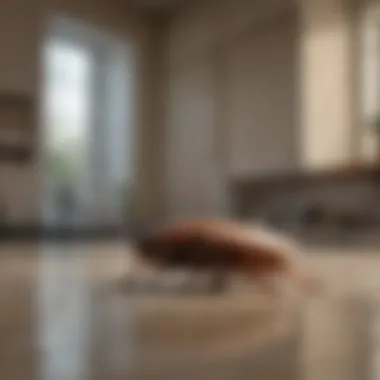

Intro
This article seeks to dissect the underlying factors that contribute to roach presence, addressing their biological characteristics, environmental influences, and behaviors. These elements play a significant role in how roaches thrive and why they can often become an unwanted housemate. Readers will gain insights into practical strategies to identify, prevent, and address infestations, ensuring their homes remain both clean and pest-free.
Prelims
The presence of roaches can create significant discomfort and health concerns, particularly in households with children or pets. This article will delve into various aspects that contribute to roach infestations, underscoring biological, environmental, and behavioral factors. By unraveling these elements, homeowners can be better equipped to tackle infestations and secure their living spaces from these resilient insects.
Key Points Covered in This Article:
- The biological background of roaches, including species and lifecycle
- Common misconceptions about cleanliness and pest invasion
- Behavioral patterns of roaches that contribute to their presence
- Environmental factors that may attract roaches even in clean homes
- Practical prevention and treatment strategies for homeowners
Understanding why roaches invade clean homes is not only about tackling a nuisance but also about promoting a healthier environment. The fight against these pests requires knowledge and initiative. This article aims to furnish readers with the understanding necessary to mitigate infestations effectively.
"Knowledge is the first step towards prevention."
The following sections will provide a deeper exploration into each of these facets, empowering homeowners to address this often-overlooked issue with confidence.
The Biology of Roaches
Understanding the biology of roaches is foundational to address why these pests can invade clean homes. Roaches have survived for millions of years due to their adaptability and resilience. Their biological traits play a crucial role in their ability to thrive, even in seemingly sanitized environments. Knowing these traits helps homeowners make informed decisions on prevention and management strategies.
Species Overview
Common types of roaches
Among the various species, the American cockroach, German cockroach, and Oriental cockroach are frequently encountered in homes. Their prevalence is tied to their specific behaviors and attributes. The American cockroach is larger and tends to live outdoors but can intrude into homes for warmth. The German cockroach, in contrast, is smaller and prefers the indoor environment, particularly in kitchens and bathrooms. Its rapid reproduction rate can quickly lead to infestation, which is a key concern.
Their adaptability allows them to exploit tiny entry points in homes, thus contributing to why clean environments can still host these pests.
Life cycle of roaches
The life cycle of roaches is essential to understand when combating infestations. Roaches go through three main stages: egg, nymph, and adult. This life cycle can vary between species but is generally short for species like the German cockroach. A female can produce hundreds of eggs in her lifetime. With such prolific reproduction, understanding the life cycle becomes vital for effective control measures. If only adults are targeted without a focus on eggs, infestations can quickly spiral out of control.
Habitat preferences
Roaches have clear habitat preferences that aid their survival. They prefer dark, moist places often found in kitchens, bathrooms, and basements. Their choice of habitat makes it easy for them to find food and water, which are critical for their sustenance. Even clean homes can harbor these spaces, particularly if moisture is present. Recognizing potential habitats in the home is crucial for effective prevention strategies.
Physical Characteristics
Size and coloration
Roaches exhibit significant variation in size and coloration among species. The color ranges from brown to black, which helps them blend into their surroundings. The ability to camouflage is advantageous, providing them safety from predators and making them hard to detect. Roaches can vary from about half an inch to four inches long, depending on the species. Their size can impact how easily they can move within a home, influencing their likelihood of being noticed.
Anatomy conducive to survival
Roaches have unique anatomical features that contribute to their survival. Their flattened bodies allow them to squeeze through tiny gaps. In addition, they possess strong legs for quick movement and long antennae for sensing their environment. These adaptations enable them to evade traps and find resources, making them formidable pests in any setting. Understanding these anatomical features helps in designing effective traps and monitors.
Adaptations to environments
Roaches adapt well to diverse environments, which is crucial for their longevity. They can adjust their feeding habits based on available food sources and can survive long periods without food or water. These adaptations make them persistent invaders. Even in clean homes that are regularly maintained, roaches find ways to endure and even thrive in residential settings. This biological resilience is critical for homeowners to understand in their pest management approach.
Common Misconceptions About Clean Homes
The notion that cleanliness guarantees a roach-free environment is a widespread belief, yet it tends to overlook significant factors influencing pest presence. Understanding these misconceptions is crucial. It enables homeowners to confront the reality of roach infestations and address them effectively.
The Myth of Cleanliness
Correlation between cleanliness and infestation
Many people assume that maintaining a clean home wards off roaches. However, the relationship is not as straightforward. Cleanliness might help minimize attraction but does not eliminate all risks. Roaches can invade due to numerous factors, including neighboring properties and structural vulnerabilities. It’s imperative to recognize that a spotless home can still be susceptible to infestations if external or hidden conditions are favorable. Cleanliness serves as a deterrent but is not an absolute safeguard.
Understanding clean versus sanitized
Another common misunderstanding lies in the difference between cleaning and sanitizing. Cleaning removes dirt and grime but does not necessarily kill germs and pests. Sanitizing, however, employs chemical solutions to reduce pathogens. Homeowners often believe that regular cleaning routines are sufficient without realizing the importance of sanitation, especially in high-risk areas like kitchens and bathrooms. By incorporating sanitization into their cleaning regimen, homeowners can significantly lower the chances of roaches and other pests finding refuge.
Environmental factors beyond cleanliness
Environmental variables often influence roach behavior more than cleanliness alone. Factors like temperature, moisture, and seasonal changes play crucial roles in roach activity. Even in immaculate homes, warm, humid conditions can attract roaches seeking shelter and food. Homeowners must remain vigilant about their environment. Blocking potential entry points, controlling humidity levels, and monitoring temperature can help maintain a pest-free space, even amidst cleanliness.
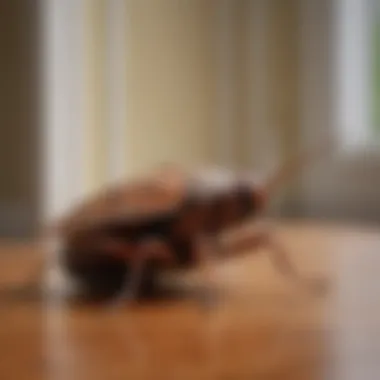
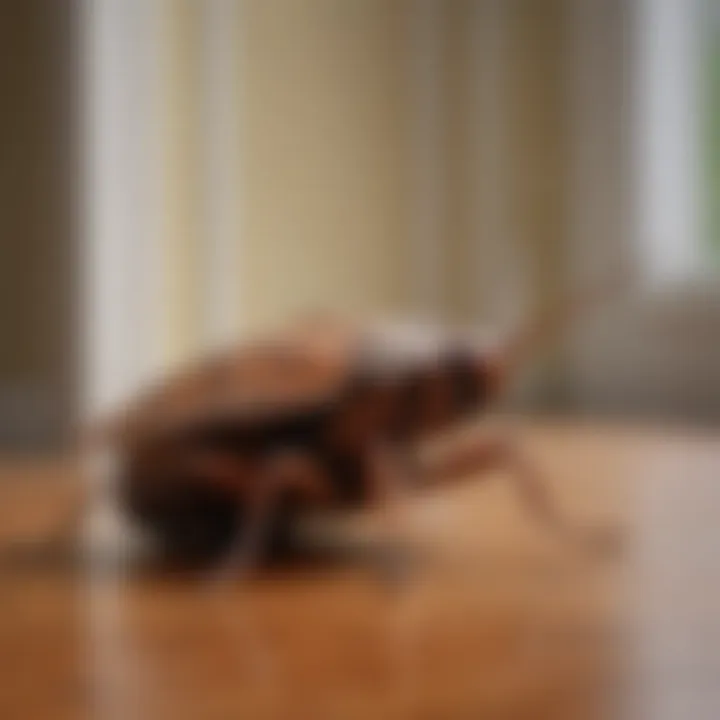
Unseen Factors Contributing to Infestations
Entry points for roaches
Roaches are adept at slipping through small openings. They can enter homes from various sources, including cracks in walls, gaps in window screens, and even plumbing fixtures. Recognizing these entry points is vital. Homeowners should regularly inspect their properties and seal any openings found. It’s not uncommon for a seemingly clean house to harbor these vulnerabilities, thus allowing roaches to infiltrate and reproduce.
Temperature and moisture considerations
Temperature and moisture act as crucial factors influencing roach populations. Roaches prefer warmer environments with higher humidity. If a home has pockets of warmth, such as near heating vents or appliances, in combination with moisture from leaks or condensation, it creates an inviting habitat for roaches. Understanding this relationship allows homeowners to implement preventive measures by controlling humidity and temperature levels.
The role of food sources
Food availability is a significant driver for roaches. Even the tidiest homes can unknowingly provide sustenance, like crumbs or spills that go unnoticed. Roaches can thrive on minimal food resources, making regular monitoring essential. Implementing airtight food storage and cleaning up promptly after meals can diminish food sources available to roaches, thus reducing the likelihood of infestation.
Behavioral Patterns of Roaches
The behavioral patterns of roaches are vital to grasp when examining their unexpected presence in clean homes. Understanding these patterns provides insight into how roaches navigate and survive in environments that house both humans and pests. Their behavior reveals the adaptability and resilience of these creatures, making it essential for homeowners to recognize the signs and triggers that may lead to infestations. This knowledge can aid in developing effective pest management strategies and preemptive actions.
Seeking Shelter
Preferred environments
Roaches tend to prefer dark, warm, and humid environments. These conditions not only provide safety but also support moisture needs essential for their survival. The choice of such shelters shows the roaches' evolution to thrive in various surroundings. Often, places like behind appliances or inside cabinets serve as ideal habitats. Such environments lessen direct human contact, allowing roaches to reproduce and gather without interruption. Understanding these preferences is crucial in preventing roach infestations in clean houses, demonstrating that cleanliness alone is not enough to deter their presence.
Consequences of urbanization
Urbanization has significantly impacted roach behavior. As cities expand, the habitats for these pests change along with human developments. With more buildings, restaurants, and waste sources, roaches find ample opportunities for shelter and food. This transformation highlights how human activity can affect pest dynamics. Urban roaches often adapt to living in close quarters with people, leading to higher infestations in homes that might otherwise be sanitary. The changes brought by urbanization must be considered when assessing infestation risks in various environments.
Human impact on roach behavior
Human actions inadvertently shape roach behaviors. Roaches learn to exploit available resources, often scavenging leftovers and waste in household settings. This behavior demonstrates their opportunistic nature. The introduction of pest control measures can also alter their movement and nesting strategies. Moreover, regular cleaning can push roaches to seek alternative shelters or food sources. It shows how critical it is for homeowners to implement consistent practices when dealing with pests, as changes in human behavior can lead to new patterns in roach infestations.
Foraging Behavior
Night vs. day activity
Roaches are primarily nocturnal, which influences their foraging activities. At night, they venture out to search for food and water, feeling safer in the dark. This behavior not only minimizes the risk of predator encounters but also aligns with their needs for survival. Understanding this activity cycle can help homeowners identify when roaches might be most active and adjust their preventive measures accordingly.
Odor detection and trail following
Roaches possess an advanced sense of smell, allowing them to detect food sources over long distances. They also leave pheromone trails, which other roaches follow. This unique feature of their behavior can lead to rapid population increases if food sources are abundant. Recognizing how they navigate using odors is crucial for homeowners in effectively disrupting these trails and minimizing infestations. Ensuring proper food storage and surface cleanliness can significantly impact foraging success.
Influence of food availability
The availability of food plays a critical role in roach behavior. They are scavengers that can thrive on organic waste, making kitchens and dining areas particular hotspots for infestation. A plentiful food source encourages higher reproduction rates and continuous presence. Homeowners must consider how accessible food is within their living spaces to effectively manage and prevent roach activity.
"Even a clean home can be an attractive target for roaches if food sources are not secured."
This connection between food availability and roach behavior emphasizes the need for proper sanitation practices.
Environmental Contributors to Roach Presence
Understanding the environmental contributors to roach presence is essential for homeowners seeking to mitigate infestations. Even in clean homes, various environmental factors can create conditions that attract roaches. This section will cover critical elements, such as climate, neighboring habitats, and moisture levels, to highlight their relevance.
Impact of Climate
Temperature preferences
Roaches prefer warm environments for survival. Their ideal temperature ranges from around 70 to 90 degrees Fahrenheit. This characteristic is important because it explains why roaches frequently seek shelter inside homes, especially during colder months. Warmth can provide them with the necessary conditions to thrive and reproduce. However, during cooler seasons, they may enter homes to escape extreme temperatures.
Seasonal behavior changes
Roaches exhibit distinct behavioral changes with the seasons. In warmer months, they may be more active and searching for food. In contrast, as temperatures drop, their activity might reduce, but they seek out shelter. This seasonal adaptability makes them difficult to control, as their presence may spike in the summer, and then decrease in winter, only to return when the environment becomes favorable.
Humidity and moisture levels
Moisture levels play a significant role in roach attraction. These pests thrive in humid environments, often preferring areas with high moisture. A unique feature to note is that water can be a vital resource, prompting roaches to invade even the cleanest homes. Any standing water from leaks or humidity can create an inviting environment. Controlling moisture levels is crucial because damp areas provide both hydration and hiding spots.
Surrounding Habitats
Influence of neighboring properties
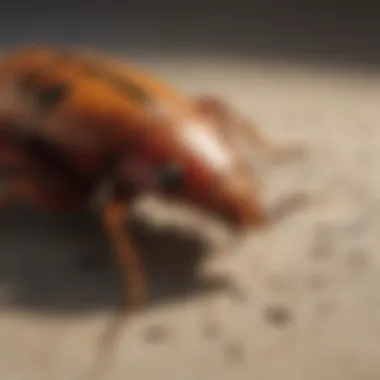
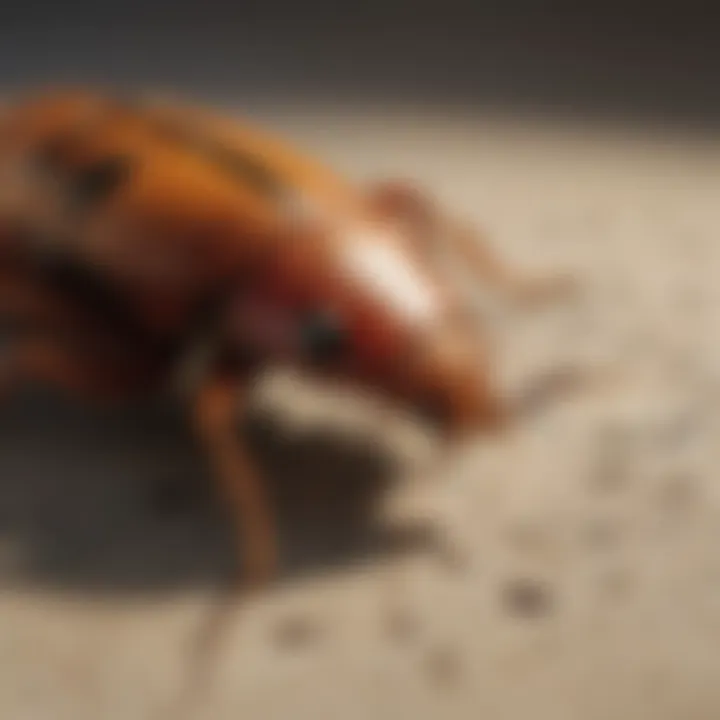
Neighboring properties can significantly influence roach infestations. If adjacent homes have infestations, those pests can easily migrate. This factor is critical as it emphasizes the need for communal pest control strategies. Failure to address infestations in one property may mean ongoing challenges for others in proximity. Therefore, awareness of neighborhood conditions is important for preventing infestations.
Nesting areas outside the home
Roaches often have nesting sites beyond the home. They may inhabit areas like garbage disposal sites, sheds, or other unkept places nearby. Identifying these nesting sites is key, as it helps eliminate possible sources feeding into a home invasion. A unique challenge here lies in the fact that many homeowners may overlook these external areas, believing only their property requires attention.
Shared environments with humans
The interaction between humans and roaches can create shared environments that foster infestations. Roaches often enter homes seeking food and warmth, particularly in urban areas. Popularity of these shared spaces makes it crucial to be aware of how daily activities, like leaving food out, can contribute to attraction. Certain lifestyle aspects can inadvertently provide a hospitable environment for them.
"The presence of roaches in clean homes can be surprising but understanding environmental factors is essential for prevention."
In summary, various environmental contributors play significant roles in the presence of roaches, regardless of cleanliness. Addressing these elements can lead to more effective prevention strategies.
Prevention Strategies for Homeowners
Prevention strategies are crucial for homeowners who wish to maintain a clean and healthy living environment. Although cleanliness is often viewed as the primary method to keep roaches at bay, it is not the only factor in preventing infestations. Understanding how to make a home less inviting to these pests involves various approaches, including physical modifications and sanitation techniques. Effective prevention not only decreases the likelihood of an infestation but also saves cost and time associated with pest control treatments later.
Structural Modifications
Sealing entry points
Sealing entry points is an effective strategy in pest prevention. Roaches can enter homes through even the tiniest gaps and cracks. Common areas include windows, doors, and plumbing fixtures. To prevent access, homeowners should inspect these areas and apply caulk or weatherstripping where necessary. The key characteristic of sealing entry points is its simplicity. It is a beneficial choice because it is relatively low-cost and easy to implement. Furthermore, once the entry points are sealed, it significantly reduces the chances of roaches finding their way inside. However, a potential downside is that thorough inspection is needed, as some cracks are harder to spot.
Proper ventilation
Proper ventilation helps maintain a dry and less hospitable environment for roaches. These pests thrive in warm and humid conditions, which can often occur in poorly ventilated spaces. Ensuring that areas like attics and basements have adequate airflow can deter roaches from settling in. The key characteristic of proper ventilation is its role in controlling humidity levels. It is a popular choice in pest prevention because it addresses one of the main environmental factors that attract roaches. The unique feature of this method is it goes beyond pest control. It contributes to overall home health by reducing mold and mildew. A disadvantage to this method may include the need for additional installations such as vents, which could add to initial costs.
Landscaping considerations
Landscaping plays a significant role in keeping roaches away from homes. Dense vegetation near the foundation can create a shelter for roaches and other pests. Homeowners should keep shrubs and trees trimmed, ensuring they are not too close to the structure. The key characteristic of landscaping considerations is the physical distance they create between the home and natural roach habitats. It is beneficial because it takes a proactive approach, helping to prevent infestations before they start. The unique aspect of this method is its dual function: enhancing the home's curb appeal while lowering pest risk. However, homeowners must be diligent with regular maintenance, as failure to do so could nullify the benefits.
Sanitation Techniques
Regular cleaning practices
Regular cleaning practices are essential for keeping a home free of roaches. These practices should include sweeping, mopping, and vacuuming frequently, particularly in areas like the kitchen and dining areas where crumbs and spills can attract these pests. The key characteristic of regular cleaning is that it removes potential food sources for roaches. It holds a notable place among prevention strategies because it directly targets a primary attractant. The unique feature of this approach is that it needs persistence and consistency, making it a fundamental habit for homeowners. However, sometimes, people may overlook hidden areas, such as behind appliances, which could lead to overlooked infestations.
Food storage methods
Food storage methods help minimize the risk of attracting roaches into homes. Properly sealed containers should be used to store food items, especially grains, cereals, and pet food. The key characteristic of this method is its focus on limiting food access to roaches. It is a popular choice because it not only prevents infestations but also maintains overall kitchen hygiene. The unique feature of this approach is the emphasis on airtight containers, which can also keep food fresher for longer. However, a potential drawback is the initial cost of purchasing high-quality storage solutions.
Waste management protocols
Waste management protocols are equally important in preventing roach infestations. Homeowners should ensure that trash bins are sealed and emptied regularly to avoid attracting pests. The key characteristic is its effectiveness in removing potential food sources. It is a beneficial choice because it prevents accumulation of waste, thus enhancing overall cleanliness. A unique aspect of this approach is the inclusion of recycling protocols, which can further contribute to cleanliness. However, one must note that adherence to these protocols requires routine diligence, as negligence can lead to an inviting environment for roaches.
"Prevention strategies are not merely about cleanliness; they are an integration of practices that create an uninviting environment for roaches."
In summary, effective prevention strategies involve a combination of structural modifications and sanitation techniques. Homeowners should be proactive and consistent in implementing these strategies to create a living space that is less appealing to roaches.
Treatment Options for Infestations
Roach infestations create various challenges for homeowners, particularly in environments typically seen as clean. Having an array of treatment options allows homeowners to effectively combat and manage these unwelcome guests. Each method offers distinct elements and considerations, which can significantly influence the outcomes.
Chemical Solutions
Chemical solutions are a common method for addressing roach infestations. They offer a direct approach to eliminating these pests through various formulations designed to target and kill. Understanding the applications, safety protocols, and regulatory factors is essential for effective use.
Insecticides and their applications
Insecticides serve as the primary chemical treatment for roaches. They come in several forms, such as sprays, gels, or baits. One of the key characteristics of insecticides is their ability to quickly reduce roach populations in targeted areas. This method is beneficial for homeowners who desire immediate results.
However, a unique feature of insecticides is that they can vary in effectiveness depending on the species of roach. For instance, German cockroaches may respond differently to certain insecticides compared to American cockroaches. This variation can pose challenges in multi-species infestations, making it crucial to choose the right product based on the specific pest.
Safety precautions
Safety precautions are paramount when using insecticides. Detailing safe application methods ensures the well-being of individuals and pets in the home. One of the main characteristics of these precautions is the importance of reading the labels carefully, as they provide crucial instructions on how to apply insecticides effectively and safely.
Moreover, a unique aspect of safety precautions includes ensuring proper ventilation in treated areas. This step can minimize the risks associated with chemical exposure. While insecticides provide effective pest control, understanding safety measures prevents potential health risks.
Regulatory considerations
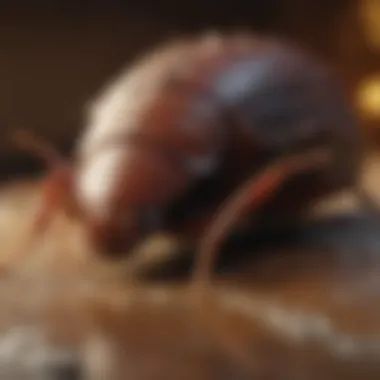
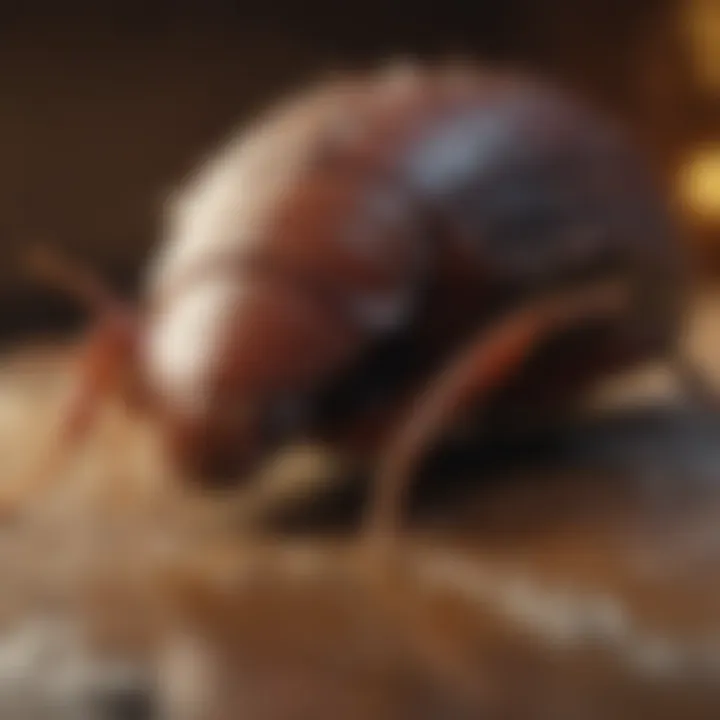
Regulatory considerations pertain to the legal frameworks surrounding the use of insecticides. These guidelines are designed to protect public health and the environment, making it essential for homeowners to comply with these regulations. A significant characteristic of these regulations is that they dictate what products can be used and how they should be applied.
Also, a unique feature of regulatory considerations includes the requirement for certain products to be applied by licensed pest control professionals. This can lead to higher costs for homeowners but ensures compliance and safety in treatment methods. Familiarizing oneself with local regulations can significantly impact pest management effectiveness.
Natural Remedies
In addition to chemical solutions, natural remedies are often sought after by homeowners, offering alternative options for managing roach infestations. While these methods may not provide the immediate impact of chemical solutions, they can play a crucial role in a comprehensive pest management strategy.
Essential oils and deterrents
Essential oils and other natural deterrents have gained popularity due to their perceived safety and eco-friendliness. One of the primary characteristics of essential oils, such as peppermint or tea tree oil, is their ability to repel roaches rather than kill them. This makes them a beneficial choice for those looking to maintain a non-toxic home environment.
A unique feature of using essential oils is that they can create a barrier that discourages roaches from entering specific areas. However, the effectiveness of these oils often requires regular reapplication, which may not be practical for all homeowners.
Homemade traps
Homemade traps offer a cost-effective approach to capture and reduce roach populations. These traps often utilize common household ingredients to create an attractive bait. The key characteristic of homemade traps is their ability to catch roaches without the use of chemicals, thus minimizing potential health risks.
A unique feature of homemade traps is their customization according to the household's specific needs. For example, homeowners can easily adjust bait types or trap designs based on what they find most effective. Nevertheless, while homemade traps can help monitor infestations, they may not be sufficient for severe roach problems.
Advantages and limitations
Evaluating the advantages and limitations of both chemical and natural remedies is essential for effective pest management. A key aspect is that chemical solutions generally provide quicker results and can address larger infestations. On the other hand, natural remedies often come with fewer health risks and promote a more sustainable approach.
Unique features include the potential for chemical solutions to lead to resistance in roach populations over time. Conversely, natural remedies may take longer to show effects but can be part of ongoing prevention strategies. A thorough understanding of these factors aids in forming a comprehensive pest control plan tailored to individual needs.
Importance of Professional Pest Control
The presence of roaches in clean homes often leads to frustration and confusion. In addressing this issue, professional pest control services become essential. Their expertise aims to effectively identify, manage, and eliminate these pests, ensuring peace of mind for homeowners. Pest control professionals are trained to assess the situation more effectively than laypersons.
When to Seek Help
Signs of severe infestation
Identifying the signs of severe infestation is pivotal in determining when to call for professional assistance. Common indicators include significant sightings of roaches, droppings scattered in various locations, and the presence of egg cases. Recognizing these signs early can prevent further spread and escalation. While an occasional roach might not ring alarm bells, an increase in sightings often signals a hidden, growing colony. Calling for professional service at this point can be a wise and beneficial choice. Experts often utilize methods and treatments tailored to your specific circumstances. Overlooking these signs can result in health risks and property damage. Thus, quick action is essential to maintain a safe living environment.
Limits of DIY methods
Many homeowners attempt to tackle roach infestations using DIY methods, which can offer some temporary relief. However, these approaches often have limitations that may hinder long-term solutions. For instance, while commercial insecticides can kill visible roaches, they might not address the hidden population or eliminate breeding sources. Utilizing DIY products without a proper understanding can waste time and resources. Relying on professional pest control allows for comprehensive treatment planning that addresses both visible and concealed issues effectively.
Cost-benefit analysis
A cost-benefit analysis in the context of pest control emphasizes assessing the financial implications against the potential damage caused by infestations. While DIY options may appear cheaper in the short term, the costs of repeated treatments, lost food, or property damage can add up quickly. Professionals, though typically pricier upfront, often provide lasting solutions, which can lead to savings over time. Evaluating this aspect is crucial for homeowners seeking to manage pest problems responsibly and effectively.
Choosing the Right Pest Control Service
Selecting an appropriate pest control service is as vital as acknowledging the infestation.
Criteria for evaluation
When evaluating pest control services, several criteria stand out. These include licensing, insurance, and expertise in handling specific pests. A reputable provider will showcase credentials that verify their legitimacy. Focusing on experience and specialized knowledge in dealing with roaches, for instance, can enhance the effectiveness of treatments provided. Ensuring that your selected service fits these criteria reflects the importance of informed decision-making.
Reputation and reviews
Evaluating the reputation of pest control companies is essential for making a well-informed choice. Online reviews and testimonials can provide insights into the effectiveness and reliability of a service. Services with a high volume of positive feedback typically indicate satisfaction among clients. This feature proves advantageous for those seeking comfort in knowing that they are enlisting experienced and trusted professionals.
Methods and strategy transparency
Transparency regarding methods and strategies used in pest control enhances credibility. Companies willing to explain their processes demonstrate confidence in their approaches and respect for clients. Homeowners should prioritize services that outline their treatment methods clearly. Understanding what products will be used, why they are chosen, and their effects can foster trust and reassurance. This understanding further supports effective pest management in homes.
Epilogue
The significance of this topic cannot be understated. Understanding the origins of roaches, especially in clean homes, provides essential insight into effective home management practices. It challenges the common perception that cleanliness alone can repel these pests, revealing a more complex interplay of biological, environmental, and behavioral factors.
Firstly, recognizing the biology of roaches is crucial. It helps homeowners comprehend the resilience and adaptability of these insects. For instance, their survival strategies and reproductive capabilities explain how a few individuals can lead to a significant infestation.
Furthermore, addressing environmental contributors adds another layer of understanding. Factors like climate and surrounding habitats significantly impact roach presence. This knowledge can guide homeowners on strategic interventions tailored to their specific circumstances.
Additionally, understanding behavioral patterns facilitates more informed decisions around prevention and management. Knowing when and where roaches are likely to forage or seek shelter can enhance both proactive and reactive measures.
"Even the cleanest environments can inadvertently provide roaches access to water and food, often without awareness."
The discussion on prevention strategies and treatment options underscores the importance of a comprehensive approach. Homeowners must be aware of both DIY methods and the potential necessity of professional help, recognizing that some situations require specialized interventions.
Lastly, the conclusion emphasizes the necessity of continuous awareness and education. Pest prevention is not a one-time task but a continuous process. Staying informed about new practices and products can keep homes roach-free.
In summary, the insights presented in this article arm homeowners with knowledge and strategies essential for understanding and managing roach presence. It advocates a balanced perspective that combines cleanliness with awareness of broader contributing factors. This enhanced understanding ultimately leads to more effective pest control strategies and contributes to overall household peace.



